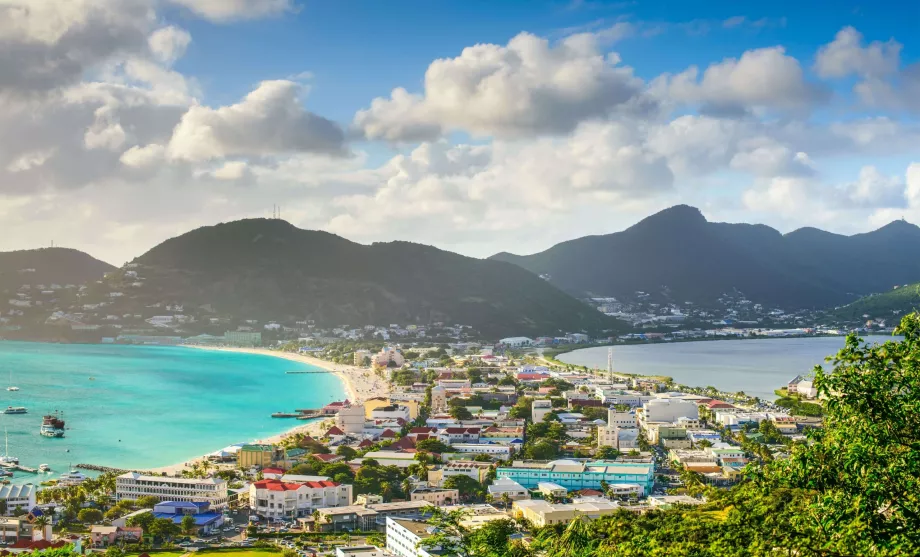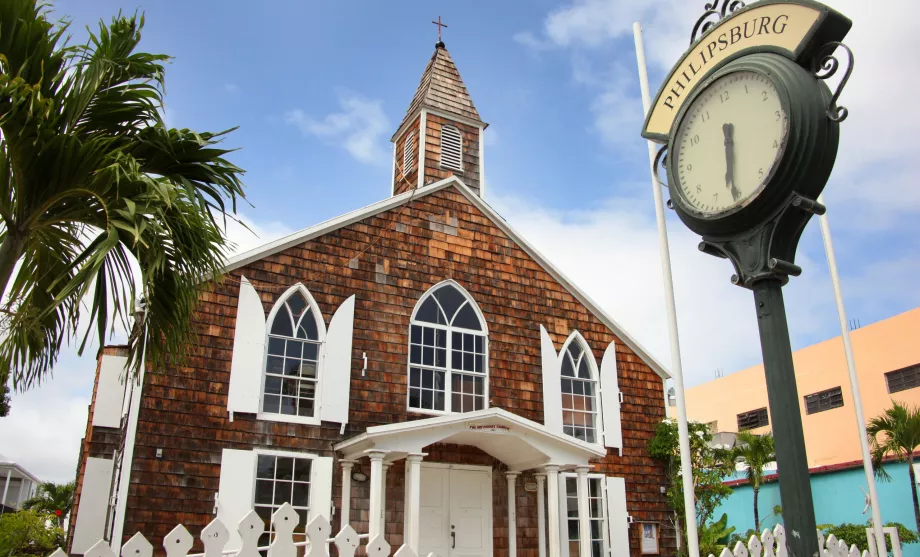Култура и история на Синт Маартен

How easy is it to speak English on St. Martin? What are the locals like and when are the shops closed on St. Martin?
The 10 best resorts on the beach
Languages
The official language differs in both the Dutch and French parts of the island.
The Dutch part
The official languages of the Dutch part of Sint Maarten are Dutch and English.
Although the official signs on the offices, police cars or some signs are in Dutch, almost no one speaks Dutch here.
Even among themselves, the locals speak almost exclusively English, if only because the vast majority of the population is made up of immigrants from the predominantly English-speaking islands of the Caribbean.
English is the most widely spoken language in Sint Maarten and you will have absolutely no problem speaking it with locals, in the shops and at the offices.
The French part
The official language in the French half is French only.
Compared to the Dutch part, you can actually speak French here without any problems and for many locals French is their native language.
However, English is also a widely spoken language here and it will certainly not be a problem to speak English in the French part.
History in a nutshell
St Martin was discovered by Christopher Columbus in 1493 and named after St Martin of Tours, whose birthday is celebrated on 11 November. The island's original name was "Soualiga" (city of salt).
Almost all European colonial powers were interested in St. Martin because of its wealth of salt. The situation finally settled down in 1648, when it was divided into a northern French and a southern Dutch part.
Until the 19th century, the colony of Saint Martin was a source of cotton, tobacco and sugar cane. For more than 150 years, slaves from Africa were brought in for this purpose, outnumbering Europeans many times over. This is why most St. Martin residents living today are descendants of African slaves.
Unlike other colonies, St. Martin has never attempted to become independent until today.
The island is still divided between the French and the Dutch, and this coexistence has lasted without any problems for almost 400 years.
People and religion
Saint Martin presents itself as „Friendly island“. and the locals are really friendly.
The people are helpful with directions and don't worry too much about anything. The only problem residents are the occasional drunks in the larger towns, but the concentration is nowhere near as high as in European or American cities.
Most of the population of just under 80,000 is descended from African slaves. Units of one percent are Europeans or Americans who have moved here and live permanently.
Religion and beliefs
Roughly one-third of the population is Catholic, and other Christian denominations have a significant presence. About 5% of the population is Hindu, descendants of Indians who came here to work during the colonial era.
The locals attend church regularly, but faith does not play a major role in daily life.
Holidays
Shops are normally open until 8pm Monday to Saturday, with significantly reduced opening hours on Sundays. Restaurants and bars are open until about 10pm throughout the week.
Public holidays on St. Martin
Offices, post offices and some shops remain closed on public holidays.
Working days differ in the Dutch and French parts of the island.
- 1 January - New Year's Day (French and Dutch)
- 3 days before Ash Wednesday (usually February) - Carnival (French part)
- Good Friday Easter - floating date (French and Dutch part)
- Easter Sunday - floating date (Dutch part)
- Easter Monday - floating date (French and Dutch part)
- 27 April - Queen's/King's Day (Dutch part)
- Carnival - 1 day in April/May (Dutch part)
- 1 May - Labour Day (French and Dutch part)
- 8 May - World War II Victory Day (French part)
- Assumption Day - floating date in May (French and Dutch parts)
- Pentecost - movable date in May (French and Dutch part)
- 1 July - Emancipation Day (Dutch part)
- 14 July - Conquest of the Bastille (French part)
- Constitution Day - 2nd Monday in October (Dutch part)
- 1 November - All Saints' Day (French part)
- 11 November - St Martin's Day (French and Dutch part)
- 25 December - Christmas Day (French and Dutch part)
- 26 December - Second Christmas Day (French and Dutch parts)
Tourism
The island builds its economy on tourism, and tourists have a large variety of accommodation to choose from, ranging from a modest room rented from locals to Airbnb to large and luxurious hotel resorts.
It is possible to rent a car from one of the rental agencies near the airport as soon as you arrive. There are also plenty of companies on the island that offer lots of great experiences, from trips to nearby islands to renting jet skis to diving with sharks.
Most often, tourists head to Maho Beach for experiences where they want to experience landing or taking off planes from close range and "fly the fence".
The island is also regularly visited by ocean liners, which can accommodate several thousand people. These ships usually only dock here for 1 or 2 days and all passengers rush to Maho Beach immediately after disembarking. We recommend that you find out when these ships arrive and skip Maho Beach on these days.
The main tourist season is from mid-December to mid-April.
Остават някакви въпроси?
Ако имате въпроси или коментари относно статията...


